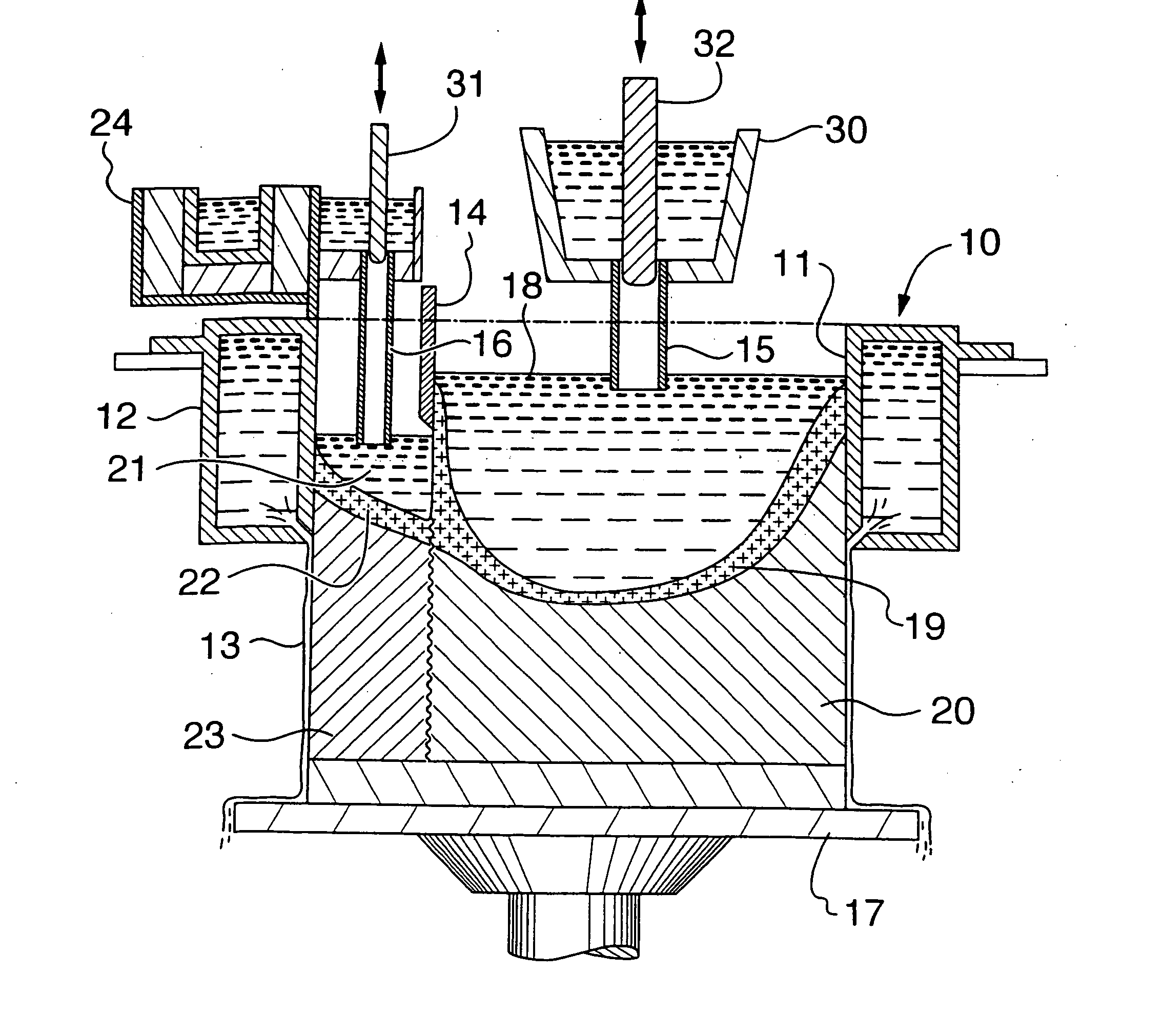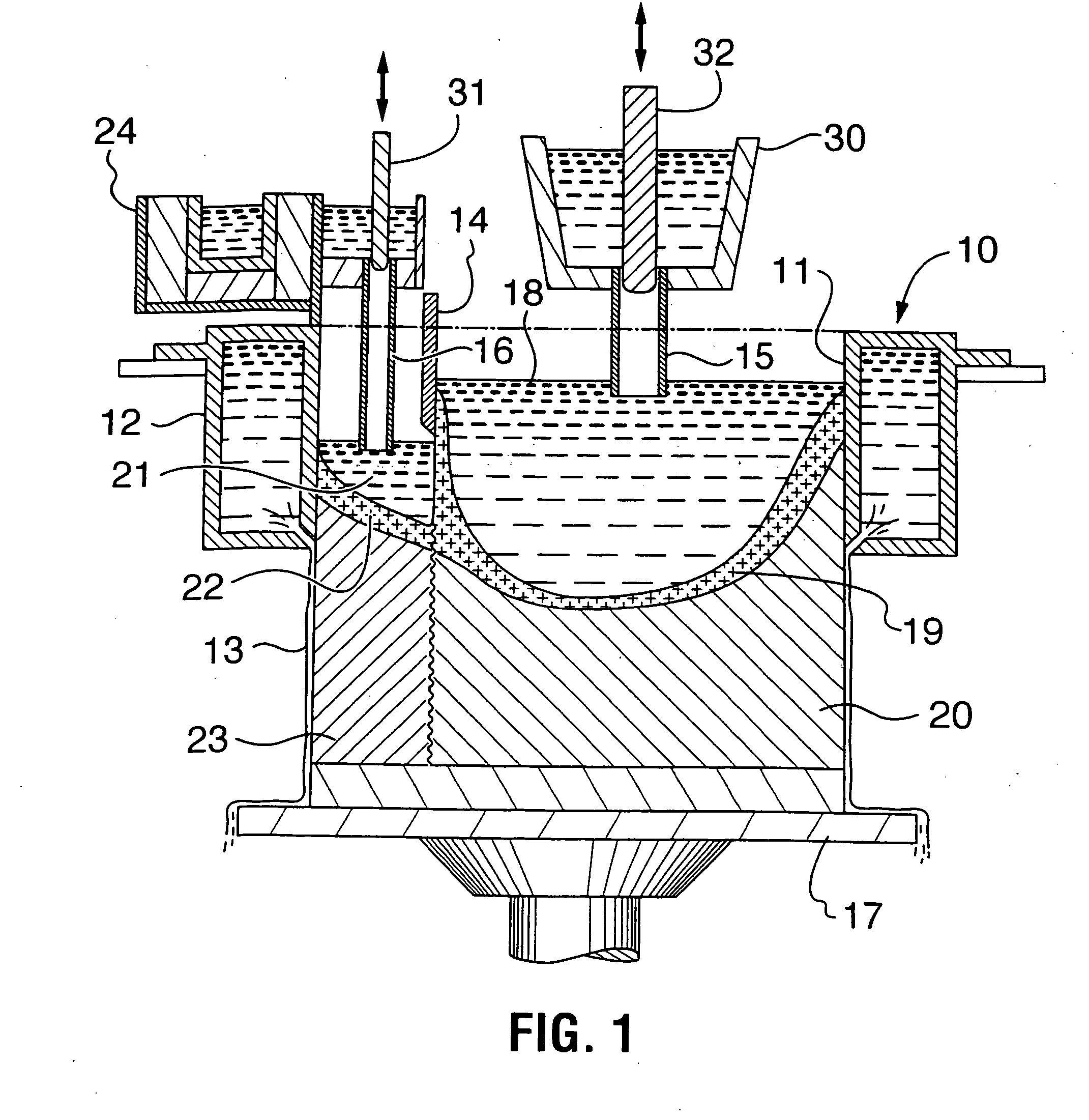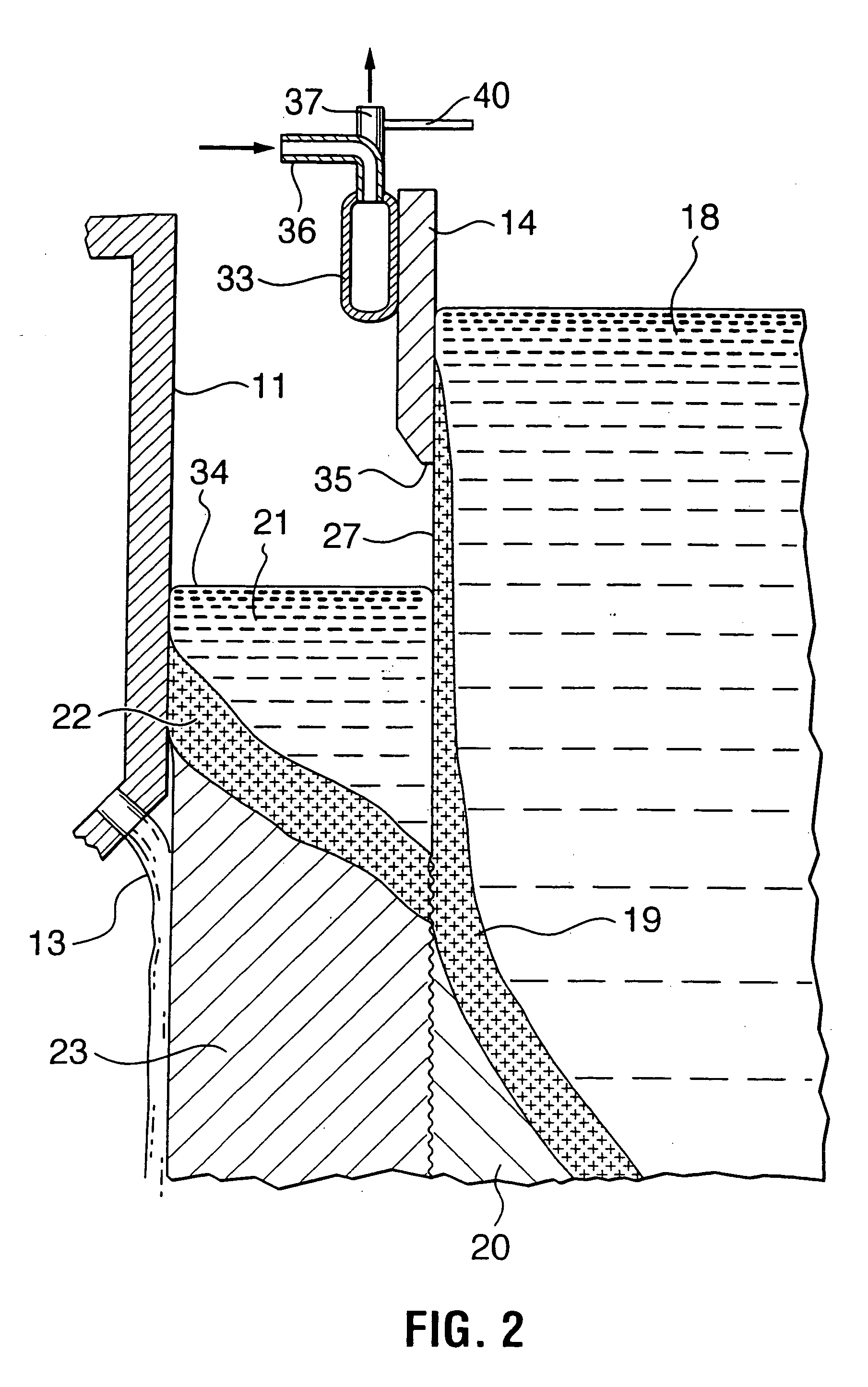Method for casting composite ingot
a composite metal and ingot technology, applied in the direction of thin material handling, transportation and packaging, etc., can solve the problems of difficult roll difficulty in controlling the method, and difficulty in rolling-bonding of aa5000 series alloys to other alloys, so as to facilitate metallurgical bonding and better control
- Summary
- Abstract
- Description
- Claims
- Application Information
AI Technical Summary
Benefits of technology
Problems solved by technology
Method used
Image
Examples
examples
[0117]FIG. 13 is a microphotograph at 15.times. magnification showing the interface 80 between an Al—Mn alloy 81 (X-904 containing 0.74% by weight Mn, 0.55% by weight Mg, 0.3% by weight Cu, 0.17% by weight, 0.07% by weight Si and the balance Al and inevitable impurities) and an Al—Si alloy 82 (AA4147 containing 12% by weight Si, 0.19% by weight Mg and the balance Al and inevitable impurities) cast under the conditions of the present invention. The Al—Mn alloy had a solidus temperature of 1190° F. (643° C.) and a liquidus temperature of 1215° F. (657° C.). The Al—Si alloy had a solidus temperature of 1070° F. (576° C.) and a liquidus temperature of 1080° F. (582° C.). The Al—Si alloy was fed into the casting mould such that the upper surface of the metal was maintained so that it contacted the Al—Mn alloy at a location where a self-supporting surface has been established on the Al—Mn alloy, but its temperature was between the solidus and liquidus temperatures of the Al—Mn alloy.
[011...
PUM
| Property | Measurement | Unit |
|---|---|---|
| diameter | aaaaa | aaaaa |
| diameter | aaaaa | aaaaa |
| thick | aaaaa | aaaaa |
Abstract
Description
Claims
Application Information
 Login to View More
Login to View More - R&D
- Intellectual Property
- Life Sciences
- Materials
- Tech Scout
- Unparalleled Data Quality
- Higher Quality Content
- 60% Fewer Hallucinations
Browse by: Latest US Patents, China's latest patents, Technical Efficacy Thesaurus, Application Domain, Technology Topic, Popular Technical Reports.
© 2025 PatSnap. All rights reserved.Legal|Privacy policy|Modern Slavery Act Transparency Statement|Sitemap|About US| Contact US: help@patsnap.com



